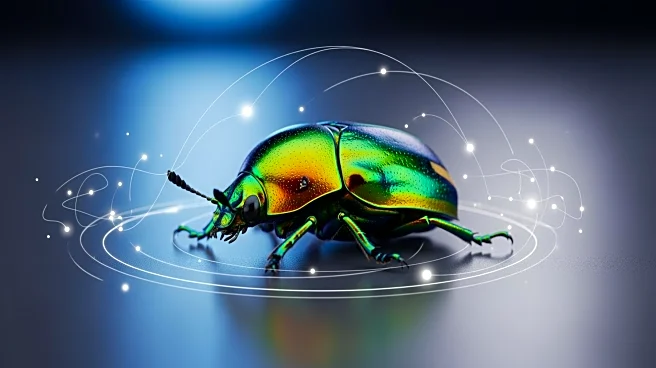What's Happening?
Researchers at Stockholm University have successfully extracted and analyzed RNA from a 39,000-year-old woolly mammoth, named Yuka, found in Siberian permafrost. This breakthrough challenges previous assumptions about the fragility of RNA, which was thought
too unstable to survive millennia. The study, led by Emilio Mármol and Love Dalén, reveals which genes were active at the time of Yuka's death, providing a snapshot of the mammoth's final biological moments. The RNA analysis showed that only a subset of the mammoth's protein-coding genes were active, including those involved in muscle contraction and cellular stress response, suggesting Yuka may have been attacked by predators shortly before dying. The discovery also includes non-coding RNAs, such as microRNAs, which regulate gene expression and have been recovered from remains this old for the first time.
Why It's Important?
This discovery expands the known limits of ancient biomolecular preservation, offering new avenues for paleogenetic research. By analyzing RNA, scientists can gain insights into the physiology and cellular processes of extinct species, potentially reshaping our understanding of megafauna. The ability to recover RNA from ancient remains opens possibilities for studying extinct viruses and pathogens, which could provide valuable information about historical pandemics and disease evolution. This research could also enhance the accuracy of distinguishing ancient samples from modern contaminants, a critical aspect of biomolecular studies.
What's Next?
Researchers aim to integrate RNA findings with existing DNA and protein data to build a comprehensive picture of extinct species' biology. This approach could lead to new discoveries about Ice Age pathogens and extinct creatures, offering a deeper understanding of their life and environment. The study's success may encourage further exploration of RNA in other ancient remains, potentially uncovering more about the evolutionary history of various species.
Beyond the Headlines
The extraction of RNA from Yuka not only provides insights into the mammoth's biology but also highlights the potential for RNA to survive longer than previously thought. This could revolutionize the study of ancient biomolecules, allowing scientists to explore genetic material from periods far beyond current limitations. The findings may also prompt ethical discussions about the use of genetic information from extinct species, particularly in the context of de-extinction efforts.













